考古学の日本研究者の皆様、ようこそ!今回は、日本と海への汚水問題についてお話しします。




Sean bienvenidos, japonistasarqueologicos a una nueva entrega en la que hablaremos sobre el asunto de Japón y las aguas residuales al mar una vez dicho esto pongan cómodos que empezamos. - Hace poco están en todos los medios de comunicación del mundo, que Japón tiene luz verde por la ONU para verter agua tratada en la planta nuclear de Fukushima en el accidente acontecido en 2011. - Hay más de 1.000 tanques y 1,34 millones de toneladas, posiblemente al 98% de la capacidad, además se está analizando el agua de mar y los alrededores de la central nuclear, actualmente se está analizando la concentración de tritio, los resultados estarán disponibles el día 25 por la tarde, previamente se habían tomado muestras de agua de los depósitos dando como resultado que era seguro, pero posiblemente tendrían que haber esperado más tiempo. - La población japonesa, se manifiesta al respecto porque esto va a generar problemas a largo plazo a la economía mundial. China suspende todas las importaciones de productos del mar japoneses, no se iba a quedar de brazos cruzados ¿Qué opinan ustedes al respecto? - Espero que os haya gustado y nos vemos en próximas publicaciones que pasen una buena semana.
考古学の日本研究者の皆様、ようこそ!今回は、日本と海への汚水問題についてお話しします。
最近、日本が2011年の福島原発事故の処理水を海洋投棄することを国連から許可されたことが世界中のメディアを賑わせている。
タンクは1000基以上、134万トンあり、おそらく容量の98%であろう。また、海水と原発周辺は分析中で、現在はトリチウムの濃度が分析されており、25日の午後に結果が出る予定である。以前は貯水池から水を採取し、安全であるという結果を出していたが、おそらくもっと待つべきだったのだろう。
日本国民が抗議しているのは、これが世界経済に長期的な問題を引き起こすからである。中国が日本産水産物の輸入を全面的に停止したのだから、黙って見過ごすわけがない。 これについてどう思う?
お気に召していただけたなら幸いである。 それではまた、良い一週間を。
Welcome, japonistasarqueologicos to a new installment in which we will talk about the issue of Japan and sewage into the sea, that said, make yourselves comfortable and let's get started. - It has recently been all over the world's media that Japan has been given the green light by the UN to dump treated water into the Fukushima nuclear power plant from the 2011 accident. - There are more than 1,000 tanks and 1.34 million tons, possibly at 98% of capacity, also the sea water and the surroundings of the nuclear plant are being analysed, currently the concentration of tritium is being analysed, the results will be available on the 25th in the afternoon, previously water samples had been taken from the reservoirs giving as a result that it was safe, but possibly they should have waited longer. - The Japanese people are protesting because this is going to create long-term problems for the world economy. China suspends all imports of Japanese seafood, they are not going to sit back and do nothing. What do you think about this? - I hope you liked it and I'll see you in future posts. Have a good week.
More Posts from Noticiasarquelogicasjaponesas and Others












Sean bienvenidos japonistasarqueológicos, a un día como, en el que aconteció el 9 de agosto de 1945 a las 11:00 horas de la mañana, B-29 Enola Gay volvió a hacer acto de presencia sobre las cabezas japonesas y lanzó sobre la ciudad de Nagasaki la segunda bomba atómica, conocida como Fat Man. - Dicho acto acabaría con la vida de unas 246 000 muertes, más la que causaría los efectos secundarios, esta ciudad es menos conocida en los restos arqueológicos de su desastre se refiere, pero tienen la misma importancia porque se ve el reflejo que dejó la bomba. - Un saludo y que acontecimientos como este no vuelvan a ocurrir, porque la historia es cíclica ojalá aprendamos de los errores y acabemos con las guerras en nuestro presente 2024 y las del futuro publicación en memoria de los caídos, mis más sincero pésame. - 日本の考古学者の皆さん、1945 年 8 月 9 日午前 11 時、B-29 エノラ ゲイが再び日本人の頭上に姿を現し、ファットとして知られる 2 番目の原子爆弾を長崎市に発射したような日へようこそ。男。 - この行為は約 246,000 人の死者の命を絶ち、さらに二次的影響を引き起こすことになる。この都市はその災害の考古学的遺跡ではあまり知られていないが、原爆が残した反射を見ることができるため、それらは同様に重要である。 - ご挨拶、そしてこのような出来事が二度と起こらないよう、歴史は周期的であるため、私たちが過ちから学び、現在の 2024 年に戦争を終わらせ、戦没者を追悼する将来の出版物で戦争を終わらせることを願っています。心からお悔やみを申し上げます。 - Welcome, archeological japonists, to a day like the one that happened on August 9, 1945 at 11:00 in the morning, B-29 Enola Gay made an appearance again over the heads of the Japanese and dropped the second atomic bomb, known as Fat Man, on the city of Nagasaki. - This act would end the lives of some 246,000 people, plus the one caused by the secondary effects. This city is less known in terms of the archaeological remains of its disaster, but they are just as important because the reflection left by the bomb can be seen. - Greetings and may events like this not happen again, because history is cyclical. I hope we learn from our mistakes and end the wars in our present 2024 and those of the future. A publication in memory of the fallen, my most sincere condolences.








Chapter 2: Pre-Jomon Japan Welcome, Japanese archaeologists, to a new archaeological installment. Having said that, make yourself comfortable and let's begin. - In the previous publication we made a short description, commenting on where the Kasuke neighborhood of the city of Midori is located, Gunma prefecture in the northern region of Kantō, we also commented on when the Upper Paleolithic dates back to 35,000 / 25,000 BC. Currently the Iwajuku III culture is 40,000 and possibly even older, only future research will shed more light on this culture and the Japanese passage, its discoverer was Tadahiro Aizawa, during the 1946 showa era of post-war Japan, excavation has continued until our present that corresponds to the Heisei era. - I hope you liked it and see you in future posts, have a good week. 第2章: 縄文以前の日本 日本の考古学者の皆さん、新しい考古学へようこそ。そうは言っても、気を楽にして始めましょう。 - 前回の出版物では、関東北部の群馬県みどり市の嘉助地区がどこにあるかについて簡単な説明を行い、上部旧石器時代がいつ紀元前 35,000 年 / 25,000 年に遡るかについてもコメントしました。現在、岩宿Ⅲ文化は 40,000 個あり、おそらくさらに古いものである可能性があります。この文化と日本語の歴史にさらに光を当てるのは将来の研究だけです。その発見者は相沢忠宏で、戦後日本の 1946 年の昭和時代に、発掘は現在まで続けられています。それは平成に相当します。 - 気に入っていただければ幸いです。今後の投稿でお会いしましょう。良い一週間をお過ごしください。 - Capítulo 2: El japón pre-Jomon Sean bienvenidos, japonistasarqueologos, a una nueva entrega, arqueológica, una vez dicho esto pónganse cómodos que empezamos. - En la publicación anterior hicimos una pequeña descripción, comentando donde se localiza el barrio de Kasuke de la ciudad de Midori, prefectura de Gunma en la región norte de Kantō, también comentamos de cuando data paleolítico superior 35.000 / 25000 a.c. Actualmente la cultura Iwajuku III y es de 40.000 e incluso más antigua posiblemente, únicamente futuras investigaciones arrojará más luz sobre esta cultura y el pasadizo japonés, su descubridor fue Tadahiro Aizawa, durante la era showa 1946 del Japón de la posguerra, se ha seguido excavando hasta nuestro presente que corresponde a la era Heisei. - Espero que os haya gustado y nos vemos en próximas publicaciones que pasen una buena semana.





Sean bienvenidos japonítasarqueológicos a una nueva entrega de última hora, china amenaza seriamente las aguas gubernamentales Taiwanesas, con una maniobras de entrenamiento. - Ya hace poco hice una publicación sobre el tema, mencioné que lo que China quiere es apoderarse de la industria de microchips para adueñarse de el mundo. - Esto es una amenaza ya que a tan solo 749 kilómetros esta Okinawa, lo cual Japón no se va a quedar de brazos cruzamos. - ¿Se trata de una guerra fría 2.0? ¿Qué harán los japoneses al respecto?¿Reclamaran las islas Kuriles? - Espero que os haya gustado y nos vemos el día 21, hasta entonces pasen una buena semana. - 日本の考古学者の皆さん、ようこそ!新しい速報です!中国は、訓練操作で台湾の政府水域を本気で脅かしています。 - 先日、中国が世界征服のためにマイクロチップ産業を買収しようとしているといった内容の記事を書きました。 - 沖縄は749キロしか離れていないので、これは脅威であり、日本は黙って見ているわけにはいきません。 - 冷戦2.0か? 日本はどうするのか? 千島列島の領有権を主張するのか? - 21日にお会いしましょう、それまで良い一週間をお過ごしください。 Welcome, Japanese archaeologists, to a new breaking news item, China is seriously threatening Taiwanese government waters with a training manoeuvre. - I recently did a post on the subject, I mentioned that China wants to take over the microchip industry to take over the world. - This is a threat because Okinawa is only 749 kilometres away, which Japan is not going to stand idly by. - Is this a Cold War 2.0? What will the Japanese do about it? Will they claim the Kuril Islands? - I hope you liked it and see you on the 21st, until then have a good week.
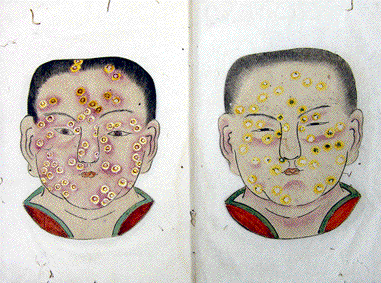
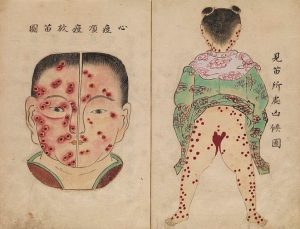
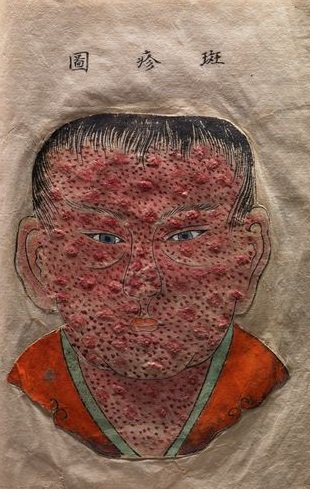


Sean bienvenidos a una nueva entrega de historia en esta ocasión, os comentaré una de las epidemias que azotó al país del Sol naciente una vez dicho esto póngase cómodos que empezamos. - La epidemia tuvo lugar en el periodo Nara (710-794) y la espidemia tubo lugar en 735-737.¿Conocían la epidemia? - Espero que os guste y nos vemos en próximas publicaciones, que pasen una buena semana. - Welcome to a new installment of history on this occasion, I will tell you about one of the epidemics that hit the country of the rising sun, having said that, make yourself comfortable and let's start. - The epidemic took place in the Nara period (710-794) and the epidemic took place in 735-737. Did they know about the epidemic? - I hope you like it and see you in future publications, have a good week. - この機会に、新たな歴史へようこそ。日出ずる国を襲った疫病の一つについてお話します。そうは言っても、気を楽にして始めましょう。 - 奈良時代(710年~794年)に流行し、735年~737年に流行しました。 彼らは疫病について知っていましたか? - 気に入っていただければ幸いです。今後の出版物でお会いできることを願っています。良い一週間をお過ごしください。
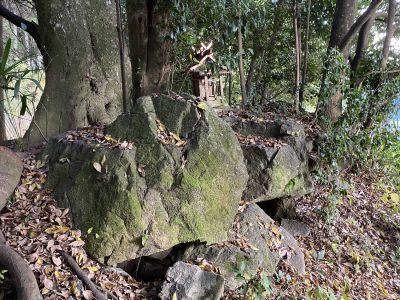


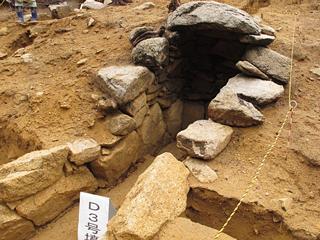

Sean bienvenidos, japonsistasarqueológicos, a una nueva entrega arqueológica, en esta ocasión os voy a hablar del túmulo Shofuku-ji una vez dicho esto, pónganse cómodos que empezamos. - ¿Dónde se localiza el túmulo Shofuku-ji? Se localiza en la ciudad de Kawanishi, en la prefectura de Hyōgo, localizado a su vez en la región de Kansai. La cámara funeraria se descubrió en la era Meiji. En 1934, el Dr. Sueharu Umehara de la Universidad de Kyoto realizó un estudio de campo y en la década de 1970, se realizó un estudio llevado a cabo por la Junta de Educación de la ciudad de Kawanishi que descubrió un ataúd de madera en la que se enterraron: puntas de flecha de hierro, espadas de hierro. - Data del siglo V y el siglo V y corresponde al periodo Kofun, con una longitud total de 40 m y fue construido a principios del siglo VI. Se descubrió un haniwa, que fue desenterrado durante la excavación, y se hizo de una manera muy similar al haniwa en la región de Owari que corresponde a la actual prefectura occidental de Aichi. - Espero que os haya gustado y nos vemos en próximas publicaciones, que pasen una buena semana. 日本の考古学者の皆さん、ようこそ!今回は、正福寺古墳についてお話します!では、早速始めましょう。 - 正福寺塚はどこにあるのですか?関西地方に位置する兵庫県川西市にあります。古墳が発見されたのは、明治時代です。1934年に京都大学の梅原末治博士が現地調査を行い、1970年代には川西市教育委員会の調査で木棺が発見され、その中に鉄鏃、鉄剣、鉄刀が埋められていました。 - 5~5世紀の古墳時代に相当し、全長40m、6世紀初頭に造られたものである。発掘調査で出土した埴輪は、現在の愛知県西部の尾張地方にある埴輪と酷似した作りのものが発見されています。
Welcome, Japanese archaeologists, to a new archaeological instalment, this time I am going to talk to you about the Shofuku-ji tumulus, having said that, make yourselves comfortable and let's get started. - Where is the Shofuku-ji mound located? It is located in the city of Kawanishi, Hyōgo Prefecture, located in the Kansai region. The burial chamber was discovered in the Meiji era. In 1934, Dr. Sueharu Umehara of Kyoto University conducted a field survey and in the 1970s, a survey conducted by the Kawanishi City Board of Education uncovered a wooden coffin in which were buried: iron arrowheads, iron swords, and iron swords. - It dates from the 5th-5th century and corresponds to the Kofun period, with a total length of 40 m and was built in the early 6th century. A haniwa, which was unearthed during excavation, was discovered and made in a very similar manner to the haniwa in the Owari region of what is now western Aichi Prefecture. - I hope you liked it and see you in future posts, have a nice week.
Tanque japonés, abatido por tropas norteamericanas, agosto del 42, guerra del Pacífico./Japanese tank, shot down by North American troops, August 42, Pacific War./米軍によって撃墜された日本の戦車(42年8月、太平洋戦争)。


Capítulo 3: El origen de un país y su prehistoria, un paseo por la historia del país del sol naciente.
-
El Pleistoceno:
-
Sean bienvenidos, a una nueva serie, de arqueología prehistórica, en esta ocasión, nos trasladamos al país del sol naciente. En los capítulos anteriores hablamos de: ¿Cuándo llegaron por primera vez los homínidos a Japón? ¿De qué vivían?, hablamos algo de su geografía, aunque no todo lo que a mí me hubiera gustado, por eso en este episodio y en los venideros la iremos analizando y como conformó la prehistoria japonesa hasta su final, también comentamos el inicio de la prehistoria humana a nivel global y de los primeros humanos de africanos que hablamos de forma superficial, también hablamos de ¿Quiénes habitaban Japón cuando ellos llegaron? Y de ¿cuándo llegaron? Respondimos a las preguntas de forma sintética, en los siguientes capítulos hablaremos más de cada uno de ellos en profundidad, como es debido dicho esto pónganse cómodos que empezamos.
-
El pleistoceno fue un periodo glacial en el cual los casquetes polares eran enormes, no toda la tierra estaba cubierta como se ha hecho creer, había zonas con praderas, una vez aclarado esto damos paso a la geografía que la abordaremos unos cuantos episodios para entender mejor su historia, prehistoria entre otros temas.
-
Geografía nipona en la prehistoria:¿Cuándo se formó el archipiélago japonés? Hay dos teorías, la primera dice que lo más probable es que se formaran por partes cada una de las cuatro grandes islas y otra dice que salieron directamente de una sola formación, es decir, que las placas tectónicas en un solo sismo salieron las cuatro islas¿Qué opinan ustedes? Lo que sí se sabe es que hokkaido se formó de una tajada hace 20 millones de años, yo aporto una tercera teoría que hubiera pequeñas islas y que a raíz de lay se formará el resto de las islas, japón se sitúa en el cinturón de fuego, lo que lo convierte en un objetivo de las actividades volcánicas ¿Cómo se llaman las placas tectónicas que forman el archipiélago? Esta pregunta y muchas más la veremos en los próximos capítulos.
-
Vamos a dividir este capítulo en sus epígrafes para poder hablar de la geografía gracias por valorarlo. -
第3章 国の成り立ちと先史、日出ずる国の歴史を歩く。 - 更新世: - 先史考古学の新しいシリーズへようこそ。この機会に、私たちは日出ずる国に移ります。 前の章では、ヒト科が初めて日本に到達したのはいつですか? 彼らは何を食べて暮らしていたのでしょうか?私たちは彼らの地理について少し話しましたが、私が望んでいたすべてではありませんでしたので、このエピソードと今後のエピソードではそれを分析し、それが終わりに至るまで日本の先史時代をどのように形作ったのか、また、古代の始まりについても説明します。世界レベルでの人類先史と、私たちが表面的に語る最初のアフリカ人についても話しますが、彼らが到着したとき、誰が日本に住んでいたのかについても話します。 そして彼らはいつ到着しましたか? 私たちは総合的な方法で質問に答えました。次の章では、それぞれの質問について詳しく説明します。言うまでもなく、安心して始めましょう。 - 更新世は、極冠が巨大だった氷河期で、信じられているように地球全体が覆われていたわけではなく、草原のある地域もありました。これが明らかになると、地理の問題に道が譲られます。これについては、いくつかのエピソードで取り上げます。その歴史、先史時代などのトピックをより深く理解するために。 - 先史時代の日本の地理: 日本列島はいつ形成されたか? 2つの理論があり、1つは4つの大きな島がそれぞれ部分的に形成された可能性が最も高いというもので、もう1つは単一の地層から直接生じたもの、つまり1回の地震でプレートが残ったものであるというものです。四島についてどう思いますか? 知られているのは、北海道は2000万年前に一片に形成されたということである。私は、小さな島々が存在し、その結果として残りの島々が形成されるだろうという3番目の理論を提供する。日本は火の輪の中に位置している。列島を形成するプレートを何というでしょう? この質問とさらに多くの質問を次の章で見ていきます。 - 地理についてお話しできるよう、この章をエピグラフに分割する予定です。ご評価いただきありがとうございます。
-
Chapter 3: The origin of a country and its prehistory, a walk through the history of the country of the rising sun.
The Pleistocene:
Welcome to a new series of prehistoric archeology, on this occasion, we move to the country of the rising sun. In the previous chapters we talked about: When did hominids first arrive in Japan? What did they live on? We talked a little about their geography, although not everything I would have liked, so in this episode and in future ones we will analyze it and how it shaped Japanese prehistory until its end, we also discuss the beginning of human prehistory at a global level and the first African humans that we talk about superficially, we also talk about Who inhabited Japan when they arrived? And when did they arrive? We answered the questions in a synthetic way, in the following chapters we will talk more about each of them in depth, as it should be said, make yourself comfortable and let's begin.
The Pleistocene was a glacial period in which the polar caps were enormous, not all the earth was covered as it has been believed, there were areas with grasslands, once this is clarified we give way to geography, which we will address in a few episodes to understand better. its history, prehistory among other topics.
Japanese geography in prehistory: When was the Japanese archipelago formed? There are two theories, the first says that it is most likely that each of the four large islands were formed in parts and the other says that they came out directly from a single formation, that is, that the tectonic plates in a single earthquake left the four islands. What do you think? What is known is that Hokkaido was formed in one slice 20 million years ago, I provide a third theory that there were small islands and that as a result of this the rest of the islands will be formed, Japan is located in the ring of fire , making it a target for volcanic activities. What are the tectonic plates that form the archipelago called? We will see this question and many more in the next chapters.
We are going to divide this chapter into its epigraphs to be able to talk about geography, thank you for valuing it.





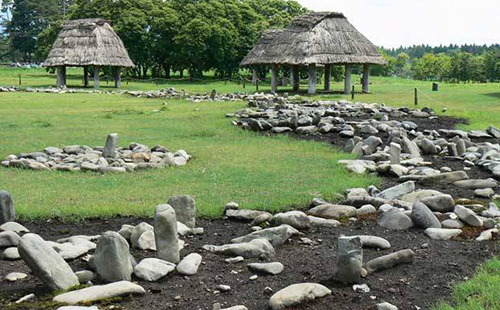
Sean bienvenidos, japonsitasarqueologícos a una nueva entrega en la que hablaremos de un Trending Topic, ya que el país del sol naciente está de moda pues le vamos a sacar beneficios y no es el único tema que están sabiendo explotar, para sacarle el mayor partido. - Lo que vengo a referirme, es que las modas son puro negocio, de lo más nocivo que nos podemos llevar a la cara, antes de que Japón estuviera de moda ya había muchos fakes, pero ahora se han duplicado e incluso triplicado. No hay que creerse todo lo que leamos por internet, siempre hay que cuestionarse las cosas, en este caso vamos a sentarnos, en dos monumentos uno localizado en Inglaterra y otro en japón. - El primero, se trata de stonehenge: Construido en el cuarto mileno 3100 antes de nuestra era, que cada vez se actualizan sus funciones la última más reciente es que no puede ser usado como un calendario solar. El segundo, se trata de Isedōtai site, localizado en la prefectura de Akita, en la región de Tōhoku en el noroeste de Japón, construido en el quinto milenio 4000 a.c en el jomon final. Se usó como calendario solar y posiblemente para los solsticios de verano e invierno. - El tema de esta publicación no es hablar de ninguno de los dos en profundidad, sino criticar a los lucidos, que sitúan stonehenge y Isedōtai site en la misma recta cronológica lo cual es una falacia por que hay por lo menos 1100 a 1500 años de diferencia aproximadamente entre ambas construcciones. - Ese es el problema del occidentalismo y eurocentrismo sobre todo la manía de colocarlo todo en una recta cronológica las fechas son algo aproximadas al igual que las rectas temporales. - Espero que os haya gustado y nos vemos en próximas publicaciones que pasen una buena semana.
Welcome, japonsitasarchaeologists, to a new edition in which we will talk about a Trending Topic, since the country of the rising sun is in fashion, we are going to make the most of it and it is not the only topic that they are knowing how to exploit, to make the most of it. - What I am referring to is that fashions are pure business, the most harmful thing we can take to our faces. Before Japan was in fashion there were already many fakes, but now they have doubled and even tripled. We should not believe everything we read on the internet, we should always question things, in this case we are going to sit on two monuments, one located in England and the other in Japan. - The first one is stonehenge: Built in the fourth millennium 3100 B.C., its functions are updated every time, the latest one is that it cannot be used as a solar calendar. The second is the Isedōtai site, located in Akita prefecture, in the Tōhoku region of northwestern Japan, built in the fifth millennium 4000 BC in the final jomon. It was used as a solar calendar and possibly for the summer and winter solstices. - The subject of this publication is not to discuss either in depth, but to criticise the lucid, who place stonehenge and Isedōtai site in the same chronological line which is a fallacy because there is at least 1100 to 1500 years difference approximately between the two constructions. - That is the problem of westernism and eurocentrism, especially the mania of placing everything on a chronological line, the dates are somewhat approximate, as are the time lines. - I hope you liked it and see you in future publications. Have a nice week.
旭日旗が流行しているので、それを最大限に利用するつもりだ。そして、彼らがそれを最大限に利用する方法を知っているのは、この話題だけではない。
私が言いたいのは、ファッションは純粋なビジネスであり、最も有害なものであるということだ。 日本が流行する前からすでに多くの偽物があったが、今では倍増し、3倍にもなっている。インターネット上の情報を鵜呑みにするのではなく、常に物事を疑ってみる必要がある。
ひとつはストーンヘンジで、紀元前3100年の第四千年紀に建てられた。 もうひとつは、東北地方の秋田県にある伊勢堂岱遺跡で、紀元前4000年、縄文末期の第5千年紀に作られた。
太陽暦として使われ、おそらく夏至と冬至にも使われた。
本書の主題は、どちらか一方を深く論じることではなく、ストーンヘンジと伊勢堂岱遺跡を同じ年代線上に置く明晰な人々を批判することである。
それが西洋主義とヨーロッパ中心主義の問題点であり、特にあらゆるものを年代順に並べようとするマニアの問題点である。
お気に召していただけたなら幸いである。 それではまた。





Sean bienvenidos a un especial, en el cual vamos a celebrar que ya somos 2100 seguidores.Y para hacerlo en esta ocasión, os traigo un pequeño resumen de la aldea Ainokura. Se localiza en la prefectura de Toyama en la isla de Honshu en la ciudad de Nanto.Se le concedió el patrimonio de la Humanidad por la Unesco en 1995 ¿Conocían la aldea?¿les gustaría visitarla? dicho esto muchas gracias por el apoyo y nos vemos en próximas publicaciones un cordial saludo. - すでに2,100人のフォロワーがいることを祝うスペシャルへようこそ。今回は、相倉村の概要をご紹介します。 南砺市本州の富山県にあり、1995年にユネスコ世界遺産に登録されました。村をご存知ですか? とはいえ、今後ともよろしくお願い申し上げます。今後ともよろしくお願い申し上げます。 - Welcome to a special, in which we are going to celebrate that we are already 2,100 followers, and to do so this time, I bring you a short summary of Ainokura village. It is located in Toyama prefecture on the island of Honshu in the city of Nanto. It was awarded a UNESCO World Heritage Site in 1995. Did you know the village? Would you like to visit it? Having said this, thank you very much for your support and see you in future publications with a cordial greeting.
-
 manueleduardoflores-blog liked this · 6 months ago
manueleduardoflores-blog liked this · 6 months ago -
 bear-pattern-hamster liked this · 9 months ago
bear-pattern-hamster liked this · 9 months ago -
 repera23 liked this · 11 months ago
repera23 liked this · 11 months ago -
 wayno08 liked this · 1 year ago
wayno08 liked this · 1 year ago -
 rainbowderpturtle liked this · 1 year ago
rainbowderpturtle liked this · 1 year ago -
 blackeneddeatheye liked this · 1 year ago
blackeneddeatheye liked this · 1 year ago -
 da-da-sk liked this · 1 year ago
da-da-sk liked this · 1 year ago -
 stevetoppsculpture liked this · 1 year ago
stevetoppsculpture liked this · 1 year ago -
 brownie-pics liked this · 1 year ago
brownie-pics liked this · 1 year ago -
 deafeningsoulpeachrebel liked this · 1 year ago
deafeningsoulpeachrebel liked this · 1 year ago -
 peintre-stephane liked this · 1 year ago
peintre-stephane liked this · 1 year ago -
 nandoartee liked this · 1 year ago
nandoartee liked this · 1 year ago -
 asami246 liked this · 1 year ago
asami246 liked this · 1 year ago -
 gdmtblr liked this · 1 year ago
gdmtblr liked this · 1 year ago -
 zlukaszemprzezswiat liked this · 1 year ago
zlukaszemprzezswiat liked this · 1 year ago -
 dgfmaurizio liked this · 1 year ago
dgfmaurizio liked this · 1 year ago -
 u-nobu liked this · 1 year ago
u-nobu liked this · 1 year ago -
 el-zorro-chile liked this · 1 year ago
el-zorro-chile liked this · 1 year ago -
 hiromusicarts-blog liked this · 1 year ago
hiromusicarts-blog liked this · 1 year ago -
 naser1963 liked this · 1 year ago
naser1963 liked this · 1 year ago -
 rodolfo9999 liked this · 1 year ago
rodolfo9999 liked this · 1 year ago -
 bipolarstringray liked this · 1 year ago
bipolarstringray liked this · 1 year ago -
 margocooper liked this · 1 year ago
margocooper liked this · 1 year ago -
 adam-trademark liked this · 1 year ago
adam-trademark liked this · 1 year ago -
 sicks93 liked this · 1 year ago
sicks93 liked this · 1 year ago -
 ted-blogs-blog liked this · 1 year ago
ted-blogs-blog liked this · 1 year ago -
 noticiasarquelogicasjaponesas reblogged this · 1 year ago
noticiasarquelogicasjaponesas reblogged this · 1 year ago

238 posts







